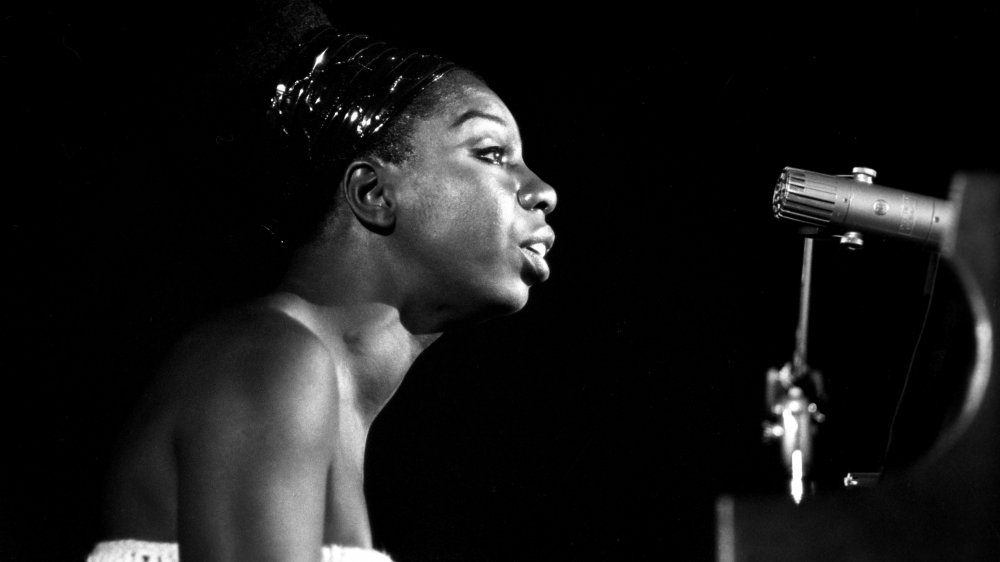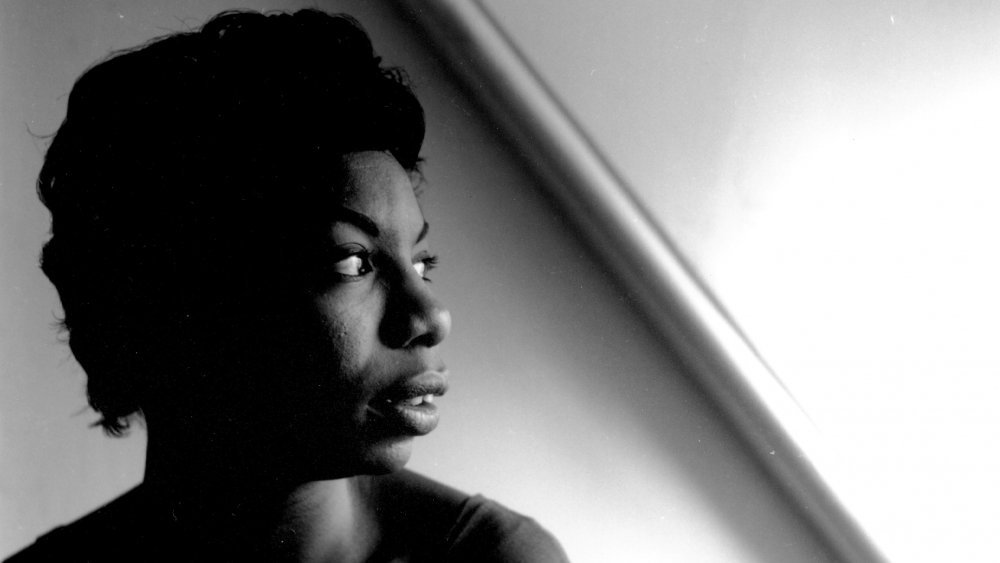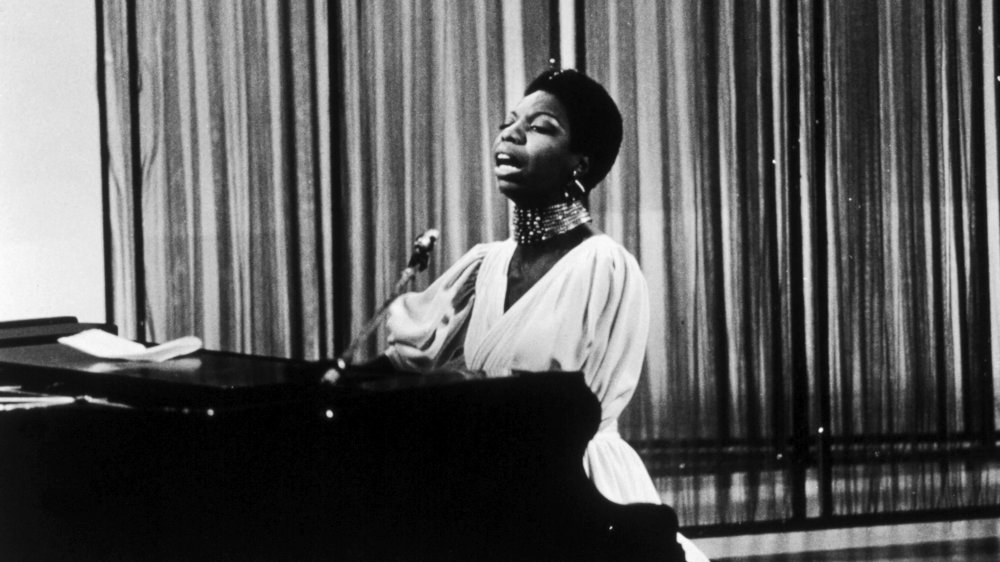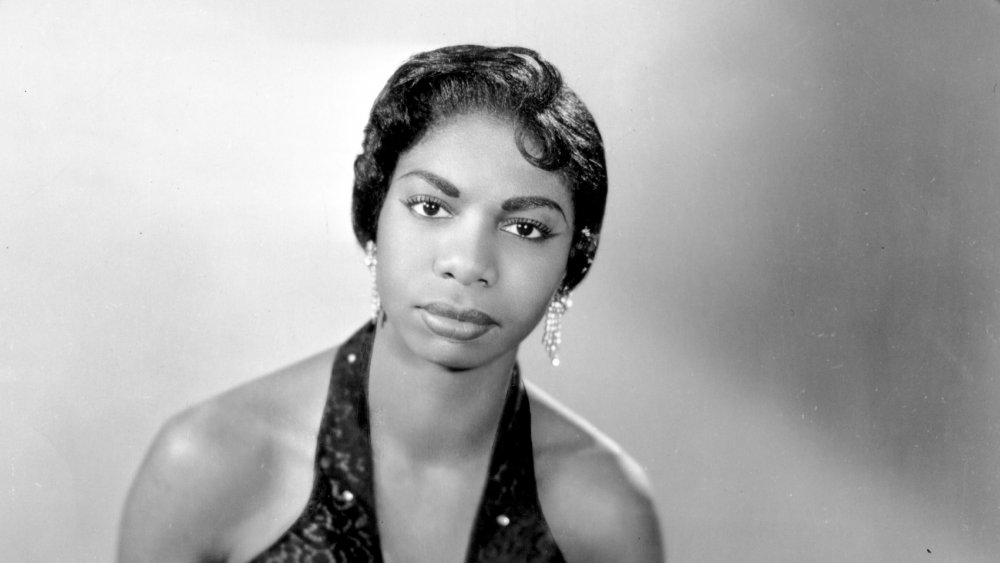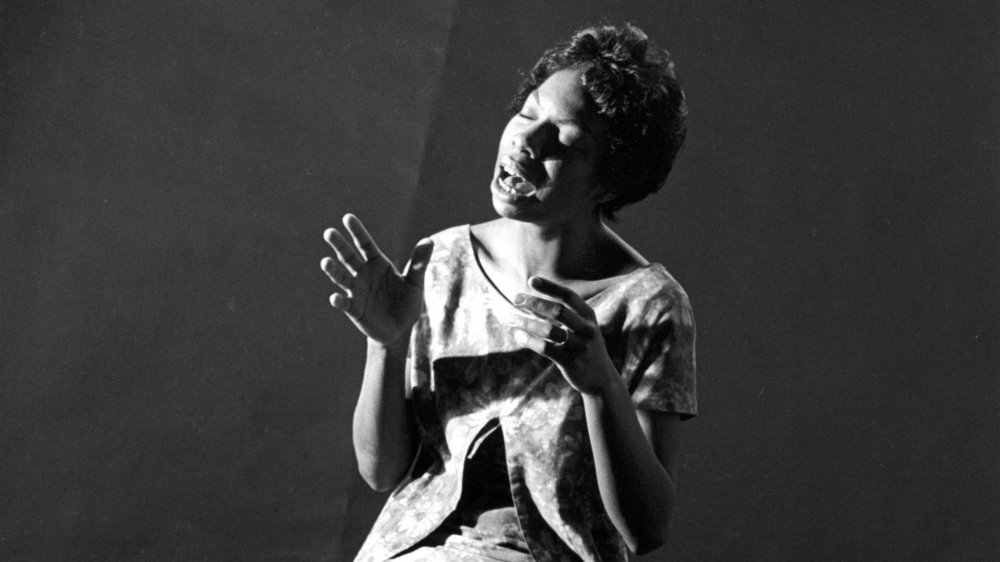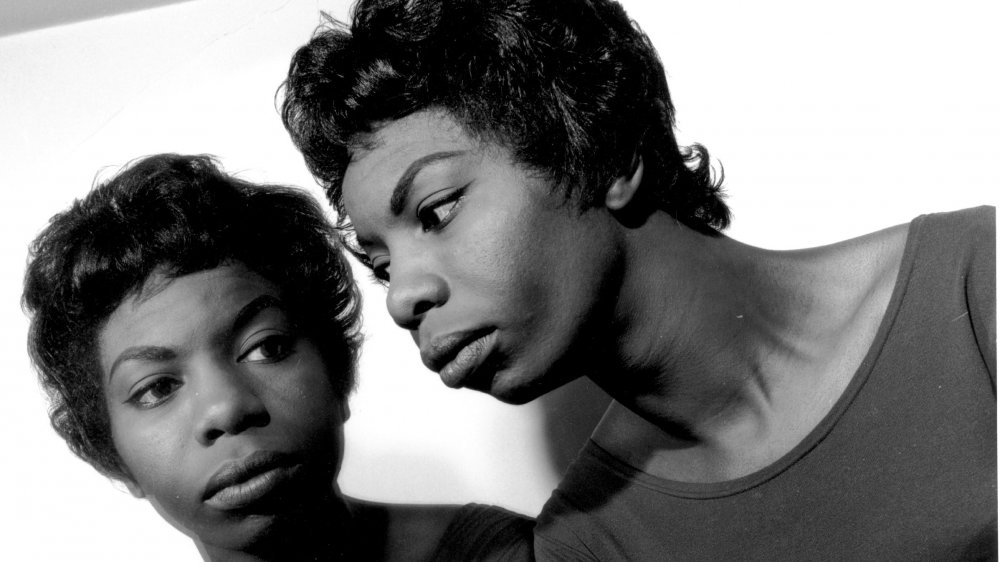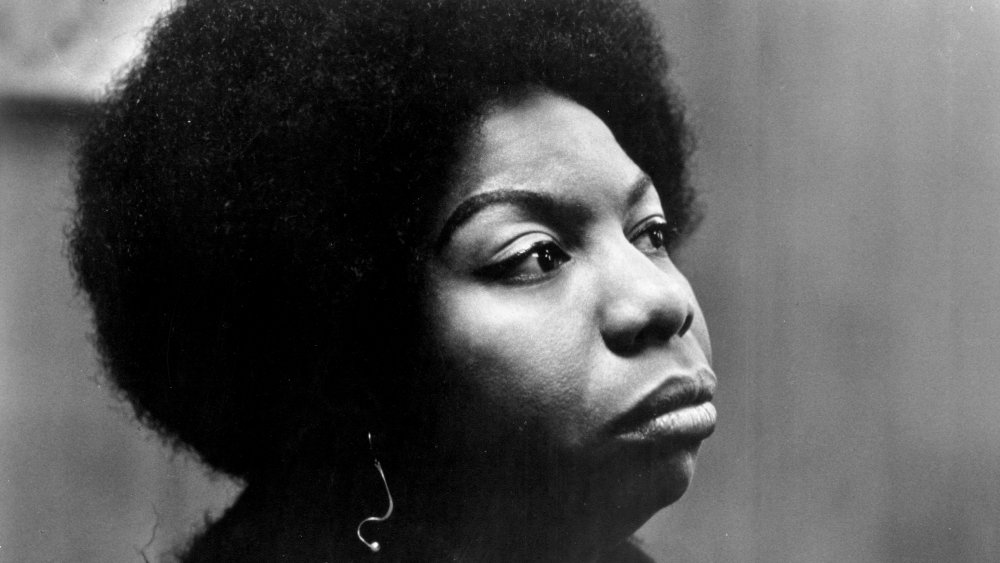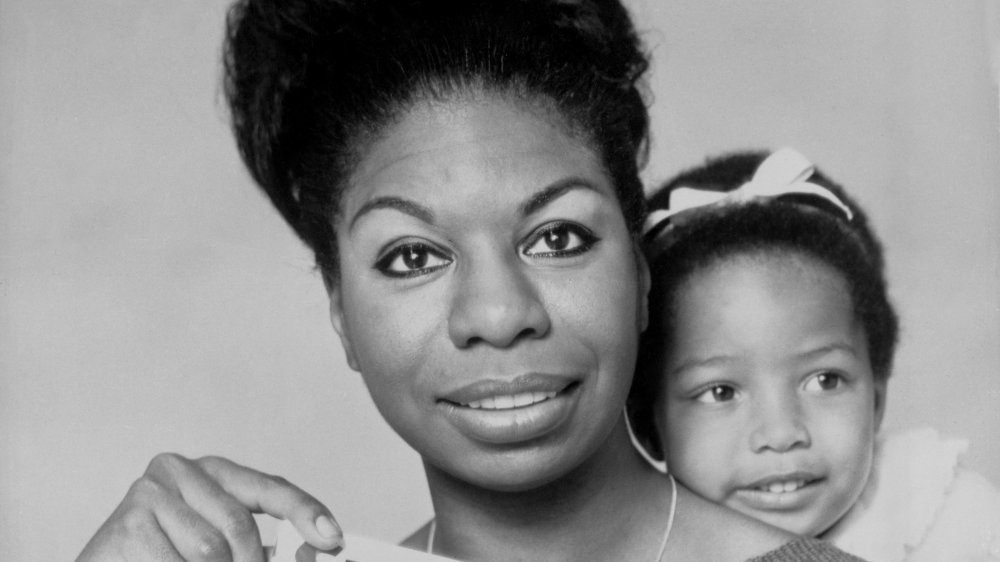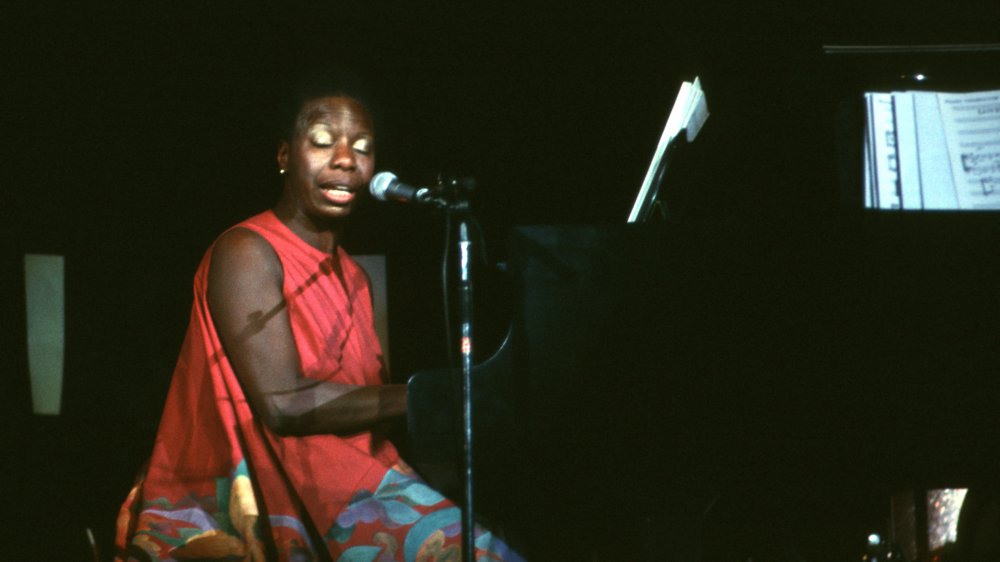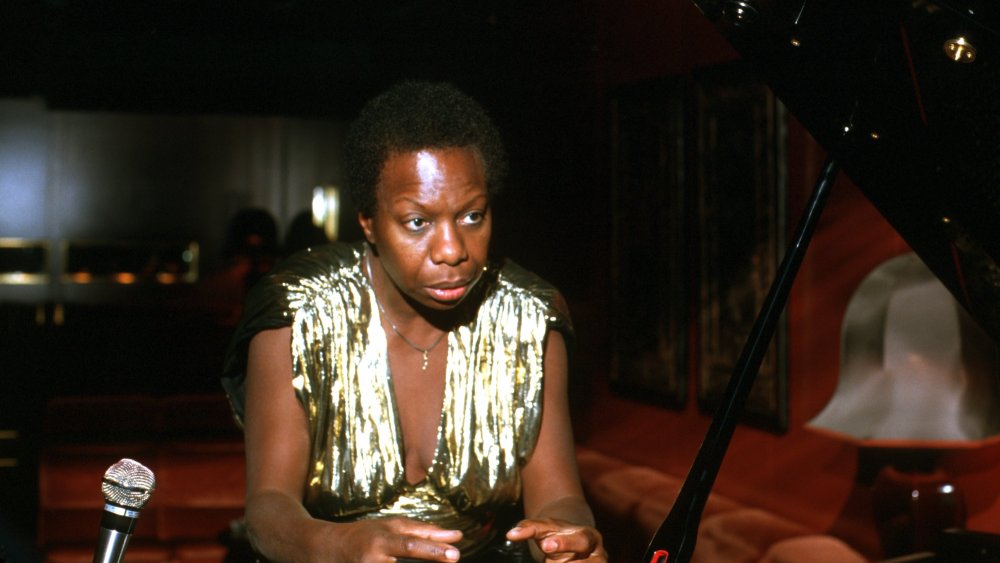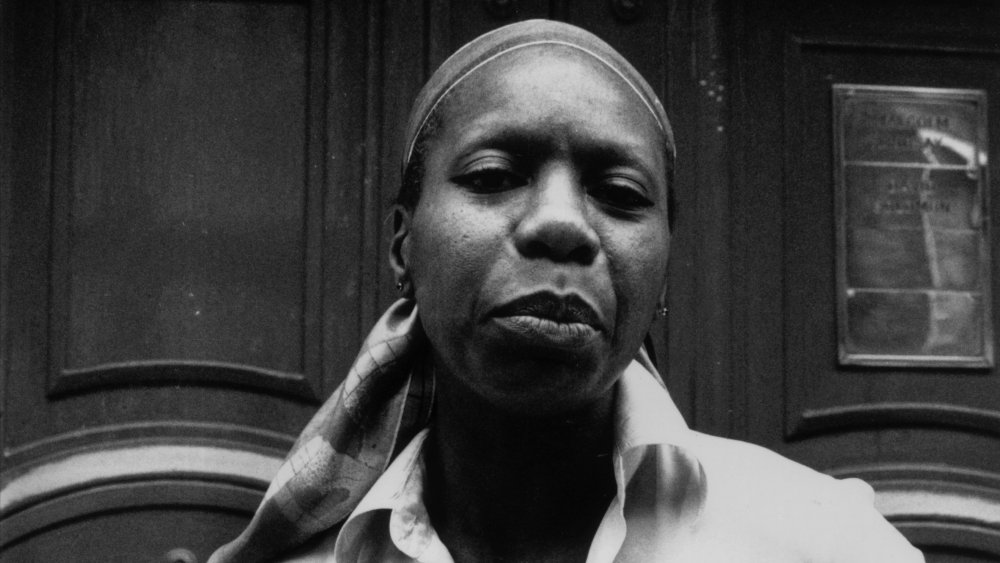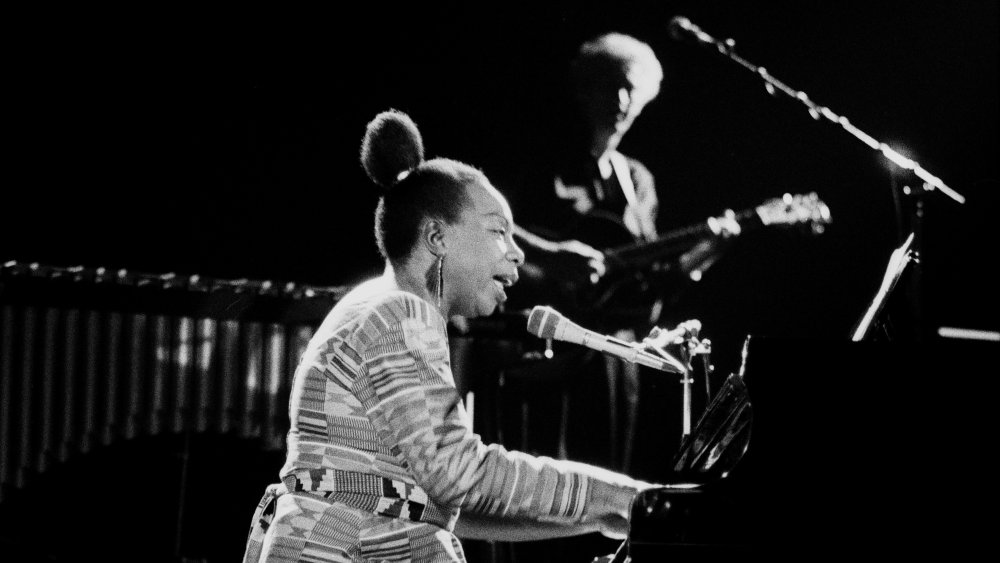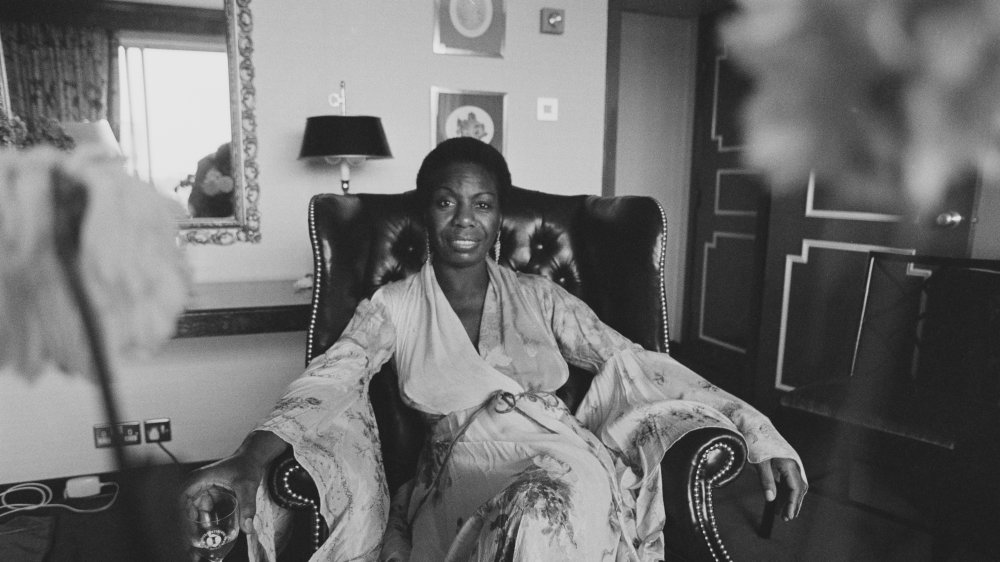Nina Simone's Tragic Real-Life Story
"I want to be remembered as a diva from beginning to end who never compromised in what she felt about racism and how the world should be, and who to the end of her days consistently stayed the same."
So said Nina Simone in an interview with Details magazine, reflecting on her career before her death in 2003 at the age of 70. The quote is notable in suggesting the depth with which one must approach the figure of Simone in retrospect; it was also, as we now know, prophetic. For anyone looking back at Nina Simone in the 21st century, it is obvious that she was always more than a brilliant singer. As NPR's Michel Martin describes it: "Nina Simone was a gifted and prolific singer, songwriter and pianist who became a powerful presence in the civil rights movement and paid a professional price for it."
But how did the woman who was born with the name Eunice Kathleen Waymon in poor circumstances in Tryon, North Carolina — and who, despite everything else, was enraptured with the dream of becoming above all else a classical concert pianist — come to be one of the defining artists and civil rights activists of the 20th century? The answer is not just Nina Simone's natural talent and the uncompromising attitude that she identified in herself in her final years, but also her innate strength and courage throughout a tumultuous and tragic personal life, the story of which — like her music — is utterly captivating.
Segregation at Nina Simone's first piano recital
The prodigious talent of young Eunice Waymon was apparent to those around her from an extraordinarily early age. Her parents were both ministers, according to her official biography, though her father also worked as a handyman to make ends meet. They first witnessed their daughter perform a whole song on the piano at the age of three. It has been claimed that Waymon was so naturally gifted that she could play almost anything she heard by ear, and under the tutelage of teacher Muriel Mazzanovich, who had moved to Tryon, grew a deep love of classic music, including Bach, Chopin, and Beethoven.
She was so committed to mastering music even as a child that Waymon was invited to perform her first piano recital at the age of 11, an event that took place at the local library. NPR reports that the recital, as well as being notable for being the first public performance from the future Nina Simone, was the first time that racial injustice became perceptible to the young musician, when her parents, who were present in the front row of the audience, were asked to move to the back of the hall to accommodate late-arriving white audience members. Reportedly, she refused to continue until her parents were reseated at the front. Simone recalled that the next day: "the skin grew back a little tougher, a little less innocent, and a little more black."
Nina Simone's frustrated classical career
It is important to remember that, in her early years, Nina Simone didn't consider herself a singer at all — her dream was to become a classical pianist working without vocal accompaniment, performing those timeless compositions taught to her by her English piano teacher.
According to her official website, her talents were not reserved simply for music; she graduated as valedictorian of her high school in 1950, and the local community raised funds to send Waymon to continue her studies at the Juilliard School of the Performing Arts in New York City. She spent the summer of 1950 preparing to audition for Philadelphia's prestigious Curtis Institute of Music, with her family relocating to Philadelphia in anticipation of her acceptance.
However, despite giving a good audition, Waymon was not accepted into the school. The rejection was a great blow to her, and though, according to the biographer Nadine Cohodas, she then received training from a professor at the school, Vladimir Sokoloff, to prepare her for another audition a year later, she was never admitted. In later years, when Waymon was famous as Nina Simone, she would claim that her rejection by the school was motivated by racism.
Nina Simone played jazz in secret
While continuing to receive musical instruction, Nina Simone worked a series of jobs. She worked for a time as a photographer's assistant, gave piano lessons and, according to History Collection, worked as an accompanist on the piano for singing students. It was during this time that she began to take notice of her own voice, as she gave advice to the students on how best to perform to her accompaniment, realizing that, for the first time, she was making money from singing.
According to Atlantic City Weekly, Simone heard from one of her students that they were going to be playing piano in a local bar, earning $90 a week — double what she was earning. She realized it was a lucrative opportunity, and quickly got herself a job for the summer of 1954 playing piano at the Midtown Bar & Grill in Atlantic City.
However, Eunice Waymon had a problem: her mother would not approve of her performing in a bar. "To her, it wouldn't be any different from working in the fires of hell," her autobiography claims. To avoid the prospect of her mother spotting the name "Eunice Waymon" on the bar's advertisements, Waymon created the stage name "Nina Simone," by combining the nickname her boyfriend at the time called her, with the name of the French actress Simone Signoret. It was a name that would become famous as her star grew on the live music circuit.
Nina Simone signs away her rights
Encouraged by the owner of the Midtown Bar & Grill to sing as well as play, Nina Simone combined popular music with classical pieces to win the approval of her first audiences and toured the east coast perfecting her live show. However, according to her autobiography, Simone always made it back to Philadelphia each week for her piano lesson with Vladimir Sokoloff.
During this time, Simone was approached by the owner of Bethlehem Records in New York, Syd Nathan, to record an album. Unusually for singers at the time, Simone insisted that she select the entirety of the music on the record, as opposed to the selection of songs that Nathan had chosen for her and brought to their first meeting, per Glide. Simone believed that she was able to get her own way with Nathan because she truly was not interested in becoming a famous singer — she still considered popular music a distraction from her classical ambitions.
The album, Little Girl Blue, was released in 1959 and attracted many more bookings for Simone in large New York venues. However, in a typically cynical incident for the music industry at the time, Simone, who had no manager or agent, was convinced to sign away the rights to the album to Nathan for $3,000, as the Guardian reported. After her version of "My Baby Just Cares For Me" became a huge hit, Simone claimed that signing the contract without reading it led to her losing a fortune.
Nina Simone had a troubled marriage
The word "tumultuous" is commonly used to describe the life of Nina Simone, and the word is particularly apt when it comes to her love life. Simone was first married in 1958, to a jazz drummer and "beatnik" named Don Ross. In her autobiography, Simone claims that she is unable to remember the date of the marriage: "a good indication of my feelings towards him." Though they moved to New York together to make the most of Simone's growing popularity, the marriage did not last long.
In 1961, Simone married Andrew Stroud, a Harlem police detective who had initially told Simone that he worked as a bank teller. In reality, stories abound that Stroud had once thrown someone from a Harlem roof. Simone remained married to Stroud through the 1960s, with her husband effectively becoming her manager and taking control of her financial affairs in their entirety.
Though according to the Riverdale Press, it was Stroud who was responsible for organizing many of the tours throughout the '60s that helped to bring Simone's music around the world. Simone described him as "the best manager I ever had" and "my cop" for the way he helped to modify her impulsive behavior and calm her in her darker moments. It has been revealed in the years since their divorce in 1970 that he was also Simone's tormentor, treating her to years of physical and psychological distress, per NPR.
Horror made Nina Simone into a prominent civil rights activist
As the 1960s wore on, Nina Simone became one of the most vocal and visible activists of the growing civil rights movement. The New Yorker points out the number of Black intellectuals that the young Simone, still in her 20s, attracted in New York, such as Langston Hughes and James Baldwin. They helped to shape her thinking about race and politics. Simone claimed that the main topics of discussion with her friend Lorraine Hansberry were "Marx, Lenin and revolution."
There were two incidents, however, that radicalized the young Simone forever, and which led her to create some of the most anthemic and iconic songs of the civil rights movement and imbue them with the anger and grief that permeate her greatest performances. The first was the murder in Jackson, Mississippi of Medgar Evers, a civil rights activist and Army veteran, on June 12, 1963. The second was the 16th Street Baptist Church bombing in Birmingham, Alabama, which occurred September 15 the same year, in which four girls were killed and dozens more seriously injured. Both of these atrocities were perpetrated by white supremacists.
Simone's response — after being dissuaded by Stroud from arming herself and taking to the streets in a blind rage — was the song "Mississippi Goddam," which she described as her first civil rights song and which became a key anthem of the movement throughout the decade.
Nina Simone's fraught relationship with her daughter
"You raise my taxes, freeze my wages, and send my son to Vietnam." These lyrics to Nina Simone's classic protest song "Backlash Blues" give some indication of what Simone was thinking when she decided to resist paying taxes in the US as a protest against the Vietnam War. According to Antiwarsongs.org, it was the mounting pressure from the tax authorities — as well as the perceived racism and unfairness of record labels and promoters — that meant Simone left the US in 1971, travelling and spending an extended period of time in Barbados, where she had an affair with Prime Minister Errol Barrow, and, later, spent time in Liberia, per History Collection.
In the US, Simone had left behind her daughter, Lisa, her one child from her marriage to Andrew Stroud. In Liberia, mother and daughter were finally reunited, but Lisa suffered a great deal of physical and emotional mistreatment from Simone. "She went from being my comfort to being the monster in my life," Lisa later claimed according to New York Daily News. "When my parents were together my mother was more giving and open but with the divorce she turned into someone you didn't want to know."
Lisa, aged just 14 at the time, left her mother in Liberia and returned to the US to live with her father in New York.
Nina Simone's self-imposed exile
Nina Simone retained her distrust of the American music industry and of American society in general, which led her to adopt a nomadic existence in the late '70s and early '80s, chiefly in Europe. She became a regular performer at Ronnie Scott's jazz club in London, according to Antiwarsongs.org, and also had a spell living in Switzerland before settling in Paris. Simone claims in her autobiography that she was attracted to the busy city for the chance to sing in French, and particularly to sing the songs of Jacques Brel. She also claims that French audiences "have a lot of respect for serious artists," and that she would not have to indulge them with more commercial edge of her output, according to Pitchfork.
Although Simone was a big name, her time in Paris was determinately low-key. She got a regular gig at a club called Les Trois Mailletz, which was not much bigger than the venue of her very first performances, The Midtown Bar & Grill in Atlantic City.
Nina Simone: Down and out in Paris
Nina Simone knew that the audiences at Les Trois Mailletz would be small, but she was confident, according to her autobiography, that word would spread that she was in Paris, and that gigs in larger venues were just around the corner. She dreamed especially of performing at Paris's grand Olympia Theatre. However, the adoring fans that Simone expected "never materialized." "I couldn't understand it; all my life, no matter what problems I might have been having in my personal life I always managed to pull a crowd," Simone said.
Paris, however, was different. Simone claims the reason she was unable to gain an audience there was because Parisians expect musicians to also live public "star" lifestyles: something Simone had eschewed in renting a small apartment and avoiding public appearances. She believed that, because of this, many of her would-be French fans thought she was going through some sort of crisis and couldn't believe she was playing such small venues, per Entree to Black Paris.
The pay was minuscule: $300 a show according to OZY, and Simone had to sell off all of her furniture and jewelry to make ends meet. As her mental health suffered and she slipped into alcoholism and depression, Simone worked less and less and was virtually penniless. Her friends, including her longtime guitarist Al Schackman, came to her aid.
Nina Simone was finally diagnosed with bipolar disorder
Nina Simone's career and personal life were both characterized by great highs of joyful exuberance as well as deep pain, and she was known for her violent mood swings and the immensely raw emotional responses to her lived experience.
After reaching her nadir in Paris, Simone was convinced to relocate to the Netherlands, where her friend Gerrit de Bruin set her up with an appointment with a doctor. According to Uncut, she was diagnosed with manic depression, or as we call it now, bipolar disorder.
Simone was prescribed Trilafon, an anti-psychotic drug that was new at the time, to treat her mood swings and to keep her stable as she looked to rebuild her career. However, the drug itself also had some tragic side effects, impairing Simone's motor skills and leaving her with slurred speech and reduced ability on the piano, both of which can be heard on her late recordings. An unfortunate end for a commanding talent.
Simone's final love affair
In the late 90s, Nina Simone became adept at giving diva-ish, waspish interviews that were, by turns, hilariously combative or brutally honest. Simone had made the south of France her permanent home and gave wide-ranging interviews discussing her life and career to American journalists by phone.
In one interview with the American magazine Details in 1997, Simone, when asked about the recent release of a compilation of her recordings from the 1960s, claimed that she had no knowledge of the release, or of the revived interest in her discography in America at the time. "Maybe if you lived in America instead of the south of France, you'd have more knowledge of your current popular resurgence here," the interviewer suggests.
But at the age of 63, it seemed that Simone, despite the tempestuous life behind her, was experiencing her own personal resurgence. In the interview, she claims: "I had an intense love affair with a Tunisian boy last year, but I don't think I want to get involved for a long time again because he opened me up like a volcano, and it almost put me under." The relationship did not last, with Simone claiming that part of the problem was with the difficulty of her lover settling in France because of his nationality, but she later told BBC's HARDtalk: "It lasted long enough for me to never forget it, I'll tell you that."
The death of Nina Simone
Nina Simone never did move back to the US. Biography states that Simone died April 21, 2003, at her home in Carry-le-Rouet, France. According to the New Yorker, Simone had been battling breast cancer for a number of years but continued touring as a headliner as late as 2001 despite her illness. Her official website states that she passed away peacefully in her sleep.
Nina Simone was already a legend in her own lifetime, and the world mourned the loss of a tireless anti-racism and anti-war campaigner as well as a prodigious, prolific, and singular talent. According to Simone's official website, her funeral was a huge event at which hundreds gathered, including her Miriam Makeba and Patti LaBelle, and to which Elton John sent flowers with the message, "you were the greatest and I love you."
Simone left behind over 50 albums of material across a diverse range of genres and remains one of the towering figures of 20th-century music and an icon of the civil rights movement.
